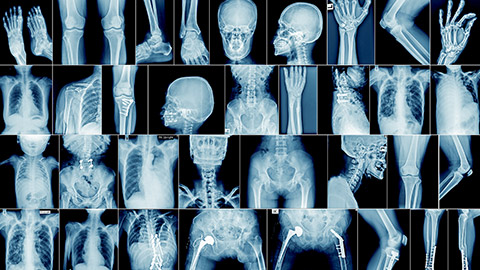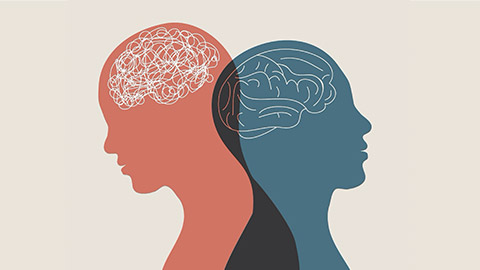In this section you will learn to:
- Confirm the person’s health status prior to delivery of health intervention as delegated by the Allied Health Professional by evaluating the relationships between different body systems to support healthy functioning.
- Recognise significance of physical health status with the person in relation to required intervention in line with scope of role and organisational policies and procedures.
- Clarify implications and significance of physical health status with the person in the case of uncertainty or limits on own scope of role
- Discuss with the person factors that contribute to maintenance of a healthy body.
- Enhance quality of work activities by using and sharing information about healthy functioning of the body..
- Ensure all records, materials and equipment are stored in a designated clean area.
- Recognise factors or issues that may impact on an identified physical condition and report to the delegating supervisor or Allied Health Professional
- Recognise potential risk factors responsible for variation or significant variations from normal health status.
Supplementary materials relevant to this section:
- Reading I: Population based screening framework
- Reading J: Impact of medication effects on physical health
In the previous section of this module, you were introduced to the means if which we can obtain information about a person’s health status through observation, questioning and interpretation of documentation such as referral and pathology reports. We also looked at the different health terminology that describes the normal structure, function and location of the major body system, whilst using that information to understand the interrelationship between these major systems.

Now that you have been introduced to the basic anatomy and physiology that is in a human body, we now need to identify how as and AHA you can screen and assess patients that are under your care and guidance to determine their health, wellbeing and functioning status. In allied health therapy, various assessment and screening tools are used to evaluate a patient's condition, identify specific issues, and guide treatment planning. Here are some commonly used assessment and screening tools in different allied health therapy disciplines:
Screening

Screening identifies people or conditions that would benefit from further assessment. The aim is to identify concerns early and avoid further problems in hospital. Screening usually involves using a prompt to identify various ‘red flags or risks associated with the patient. These can include medical, functional, and psychosocial risk factors such as:
- being older than 70 and living alone. This includes an increased risk of isolation or loneliness that negatively affects a person's physical and mental health, and increases the risk of mortality
- a diagnosis of dementia or displaying signs of cognitive impairment
- a recent stay in hospital
- polypharmacy, a history of falls, mobility problems and incontinence
- a recent unexplained weight loss
- a functional limitation with personal care, domestic and community participation
- relying on a significant amount of community service support
Once we have identified any of the above red flags, we can use targeted screening tools as outlined in the individual topics in this section. Trained staff can conduct screening at any time during a person’s time in hospital. Ideally screening is conducted on admission and regularly throughout the episode of care. Early screening is important in establishing a baseline for monitoring an older person’s level of function and identifying changes in health.
Screening can identify increased risk for functional decline and in many cases trigger an immediate response to mitigate risk until further assessment is possible.
Examples of screening tools
Allied health encompasses a wide range of healthcare professions, so the specific screening tools used may vary depending on the discipline and the purpose of screening, therefore remember to always follow the policies and procedures of the organisatioin you are employed at. However, here are some commonly used screening tools in allied health:
- Assessment Questionnaires: These questionnaires are used to gather information about a patient's medical history, lifestyle, symptoms, and overall health status. Examples include the SF-36 (Short Form 36) and the WHOQOL (World Health Organization Quality of Life) questionnaire.
- Functional Assessment Tools: These tools assess an individual's ability to perform various activities of daily living (ADLs) and instrumental activities of daily living (IADLs). They evaluate mobility, self-care, communication, and cognitive functions. Examples include the Barthel Index, the Katz Index of Independence in Activities of Daily Living, and the Montreal Cognitive Assessment (MoCA).
- Pain Assessment Tools: These tools are used to measure and evaluate pain intensity and characteristics. The most widely used tool is the Visual Analog Scale (VAS), where patients rate their pain on a scale from 0 to 10. Other tools include the Numeric Rating Scale (NRS) and the McGill Pain Questionnaire.
- Mental Health Screening Tools: These tools help identify and assess mental health conditions such as depression, anxiety, and cognitive impairments. Examples include the Patient Health Questionnaire-9 (PHQ-9) for depression, the Generalized Anxiety Disorder 7-item scale (GAD-7) for anxiety, and the Mini-Mental State Examination (MMSE) for cognitive impairment.
It's important to note that the selection and use of screening tools should be based on professional judgment, specific clinical contexts, and evidence-based practices. Different allied health professionals may have specialized tools related to their respective disciplines.
The table below provides a few examples that you might be able to use or will be required to use depending on the policies of the organisation you work for.
| Allied health therapy | Assessment tools |
|---|---|
| 1. Occupational therapy |
|
| 2. Physical therapy |
|
| 3. Speech and language pathology |
|
| 4. Respiratory therapy |
|
| 5. Nutrition Therapy |
|
It's important to note that the specific tools used may vary depending on the clinical setting, patient population, and therapist's preference. These assessment and screening tools aid allied health therapists in gathering objective data, making accurate diagnoses, and developing appropriate treatment plans tailored to the individual needs of their patients.
The extract below has been derived from the Australian Commission (2018), which explains the process of Identifying patients who may be at risk of harm, and mitigating the risks for those patients is a core part of comprehensive care planning and treatment.
The Comprehensive Care Standard requires the use of screening and assessment processes with patients, families, carers and other support people. In addition to these general screening and assessment processes, the Standard highlights the need to identify specific risks of harm in the areas of falls, pressure injuries, cognitive impairment, malnutrition, self-harm and suicide, violence and aggression, and seclusion and restraint. Risk screening and assessment are a core part of healthcare delivery and comprehensive care. As well as identifying clinical issues, they also identify the likelihood of harm, and support decision making about treatment and risk mitigation. While there is considerable variability in how the terms are used, the Commission uses the following terminology:
- Risk screening: a short process to identify patients who may be at risk of, or already have a disease or injury. It is not a diagnostic exercise, but rather a trigger for further assessment or action.
- Risk assessment: a more complex and in-depth measurement process designed to be completed when required after screening to quantify risks of harm and identify potential mitigation strategies. The way in which risk screening and assessment processes are used varies within health service organisations, depending on a range of factors.
These include:
- The hospital context, such as the size, location, type of hospital and patient population
- The available clinical workforce
- The way in which an individual patient has presented, such as through the emergency department, as an elective admission, or as a referral from outpatients, or a doctor’s rooms
- The characteristics of the patient, such as their presenting problem, age, comorbidities and social circumstances
- The ward or department they are admitted to, and their treatment pathway, including whether they are a surgical, medical or subacute patient, and the particular specialty they may be under.
The specific processes for risk screening and assessment will vary depending on the combination of these factors. This element covers both risk screening and assessment, and focuses on evaluating conditions and illnesses whilst also implementing a process to detect and mitigate risks.
Health service organisations can implement different strategies to screen, assess risk and mitigate potential risks of harm to patients. These strategies include using local data to understand and mitigate common risks, developing models of care that mitigate risks to patients in particular wards, using screening conversations to triage patients who may need further risk assessment, and using validated tools to quantify risk.
(Australian Commission on Safety and Quality in Health Care, 2018)
Assessment tools

Assessment involves collecting information that gets to know the patient in detail, evaluates their risks and the nature of problems to be identified. Assessment should integrate all the relevant issues. It should explore the medical, physiological, social, and psychological function of the patient under your care.
The assessment process encourages us to be curious and to consider the best possible interventions that we can employ to minimise risks and maximise our patient’s quality of life.
Assessment supports us to:
- treat the condition that caused the admission
- detect and quantify additional conditions or psychosocial issues that contribute to or complicate issues and respond to them. For example
- depression - consider if the person needs a medical review
- poor nutrition - consider what can be done to optimise the person’s intake
- social isolation, or risk of loneliness - consider how you can encourage the person to participate in their care by harnessing their personal and social connections, and consider linking them to supports that are meaningful to them
- use strategies to prevent conditions that often emerge but can be avoided (such as delirium and falls).
We can gather information as part of the assessment process from multiple sources. The four main sources of information are:
- patient themselves - self report.
- Others who know the patient well - informant report.
- Observation of the person undertaking various activities - direct observation.
- Various secondary written or verbal sources - including hospital records, medical reports, investigation results, communication from community care providers.
Unless there are reasons to suspect otherwise the patient is considered the best source of information about their own health1. Direct observation is the best source of information about physical function; however, we should consider how the environment or setting where observations take place may impact on the patient’s performance.
The assessment tool or scale should enable collection of useful patient data that supports interpretation of the holistic health status, identifies patient needs, and informs care planning and interventions to restore health and wellbeing.
Selecting an assessment tool
Consider the following factors when selecting an assessment tool include:
- A standardised tool can reduce variation in practices and interpretation of findings and allow comparison across assessments.
- A validated assessment tool ensures the right data is captured to evaluate the patient and their progress.
- Is a specific tool mandated for specific circumstances or settings? See the individual topics for examples.
- Does the tool cater for cultural or language differences?
- Is the tool appropriate for the physiology of ageing?
The format used will also depend on the discipline, skill and expertise of the clinician, the context and setting of the assessment, the time available and the number of assessors involved. The assessment can be:
- unstructured – if the professional expertise of the assessor is high
- semi-structured – incorporates specific tools and checklists
- structured and standardised – using global assessment instruments.
(Victoria Health, 2015)
Read
Reading I: Population based screening framework
Reading I discusses about the screening framework and its purpose which is to inform decision-makers on the key issues to be considered when assessing potential screening programs in Australia. The framework is underpinned by the principles of access and equity, which are fundamental elements of all population screening programs, and is intended to provide guidance and inform judgement.
Now that you have an understanding of conducting screening and assessment on patients that are under your care, let’s take a look at recognising factors that can impact the patient’s physical condition. Remember in the previous section of this Study Guide you were introduced to the ‘normal’ values that are required for a patient to be classified as healthy.

Diabetes

Diabetes is a disease that occurs when your blood glucose, also called blood sugar, is too high. Blood glucose is your main source of energy and comes from the food you eat. Insulin, a hormone made by the pancreas, helps glucose from food get into your cells to be used for energy. Sometimes your body doesn’t make enough—or any—insulin or doesn’t use insulin well. Glucose then stays in your blood and doesn’t reach your cells. Over time, having too much glucose in your blood can cause health problems. The most common types of diabetes are type 1, type 2, and gestational diabetes.
| Types of diabetes | Explanations | Causes |
|---|---|---|
| Type 1 diabetes | If you have type 1 diabetes, your body does not make insulin. Your immune system attacks and destroys the cells in your pancreas that make insulin. Type 1 diabetes is usually diagnosed in children and young adults, although it can appear at any age. People with type 1 diabetes need to take insulin every day to stay alive. | Type 1 diabetes occurs when your immune system, the body’s system for fighting infection, attacks and destroys the insulin-producing beta cells of the pancreas. Scientists think type 1 diabetes is caused by genes and environmental factors, such as viruses, that might trigger the disease. Studies such as TrialNet are working to pinpoint causes of type 1 diabetes and possible ways to prevent or slow the disease. |
| Type II diabetes | If you have type 2 diabetes, your body does not make or use insulin well. You can develop type 2 diabetes at any age, even during childhood. However, this type of diabetes occurs most often in middle-aged and older people. Type 2 is the most common type of diabetes. | You are more likely to develop type 2 diabetes if you are not physically active and are overweight or obese. Extra weight sometimes causes insulin resistance and is common in people with type 2 diabetes. The location of body fat also makes a difference. Extra belly fat is linked to insulin resistance, type 2 diabetes, and heart and blood vessel disease. |
| Gestational diabetes | Gestational diabetes develops in some women when they are pregnant. Most of the time, this type of diabetes goes away after the baby is born. However, if you’ve had gestational diabetes, you have a greater chance of developing type 2 diabetes later in life. Sometimes diabetes diagnosed during pregnancy is actually type 2 diabetes. | Scientists believe gestational diabetes, a type of diabetes that develops during pregnancy, is caused by the hormonal changes of pregnancy along with genetic and lifestyle factors. |
Symptoms and causes
Symptoms of diabetes include:
- increased thirst and urination
- increased hunger
- fatigue
- blurred vision
- numbness or tingling in the feet or hands
- sores that do not heal
- unexplained weight loss
Symptoms of type 1 diabetes can start quickly, in a matter of weeks. Symptoms of type 2 diabetes often develop slowly—over the course of several years—and can be so mild that you might not even notice them. Many people with type 2 diabetes have no symptoms. Some people do not find out they have the disease until they have diabetes-related health problems, such as blurred vision or heart trouble.
Management of diabetes
Although diabetes has no cure, it can be managed by taking the right steps to stay healthy. The National Institute of Health recommends make the following recommendations for managing diabetes:
- Follow a diabetes meal plan: Choose fruits and vegetables, beans, whole grains, chicken or turkey without the skin, fish, lean meats, and non-fat or low-fat milk and cheese. Drink water instead of sugar-sweetened beverages. Choose foods that are lower in calories, saturated fat, trans fat, sugar, and salt. Learn more about eating, diet, and nutrition with diabetes.
- Engage in physical activity daily: Set a goal to be more physically active. Try to work up to 30 minutes or more of physical activity on most days of the week. Brisk walking and swimming are good ways to move more.
- Take appropriate medicine: Take medicine(s) for diabetes and any other health problems, even when feeling good or having reached a healthy blood glucose, blood pressure, and cholesterol goals.
- Check your blood glucose levels: For many people with diabetes, checking their blood glucose level each day is an important way to manage their diabetes. Monitoring blood glucose levels is most important for anyone taking insulin. The results of blood glucose monitoring can help diabetes sufferers make decisions about food, physical activity, and medicines.
Tip - Find out more
As mentioned, topics like diabetes, cancer and obesity are quite heavily detailed subjects. The following link https://www.diabetesaustralia.com.au/about-diabetes/what-is-diabetes/ will provide you with a lot of detailed information on diabetes, feel free to have a read through it as it may help you in some assessment questions.
Cardiovascular disease

The cardiovascular system is an intricate system, and each part of the system plays an important role in ensuring your body receives the oxygen and nutrients it needs. Diseases of the cardiovascular includes diseases effecting the various elements of the heart and diseases impacting the ability of blood to move through the blood vessels.
The term “heart disease” refers to several types of heart conditions. The most common type of heart disease in the United States is coronary artery disease (CAD). The coronary artery is the artery that feeds oxygenated blood to the heart muscle itself. If the coronary artery is partially or fully blocked it affects the blood flow to the heart. When the heart muscle does not get oxygenated blood this is called a heart attack. Sometimes heart disease may be “silent” and not diagnosed until a person experiences signs or symptoms of a heart attack, heart failure, or an arrhythmia.
When these events happen, symptoms may include:
- Heart attack: Chest pain or discomfort, upper back or neck pain, indigestion, heartburn, nausea or vomiting, extreme fatigue, upper body discomfort, dizziness, and shortness of breath.
- Arrhythmia: Fluttering feelings in the chest (palpitations).
- Heart failure: Shortness of breath, fatigue, or swelling of the feet, ankles, legs, abdomen, or neck veins.
The risk factors for the majority of cardiovascular diseases are high blood pressure, high blood cholesterol, and smoking. About half of people in the United States (47%) have at least one of these three risk factors. Several other medical conditions and lifestyle choices can also put people at a higher risk for heart disease, including:
- Diabetes
- Overweight and obesity
- Unhealthy diet
- Physical inactivity
Risk factors of cardiovascular disease

Metabolic syndrome is a group of conditions that together raise your risk of coronary heart disease, diabetes, stroke, and other serious health problems. The good news is that it is largely preventable.
You might have metabolic syndrome if you have three or more of the following conditions:
- A large waistline: This is also called abdominal obesity or “having an apple shape.” Extra fat in your stomach area is a bigger risk factor for heart disease than extra fat in other parts of your body.
- High blood pressure: If your blood pressure rises and stays high for a long time, it can damage your heart and blood vessels. High blood pressure can also cause plaque, a waxy substance, to build up in your arteries. Plaque can cause heart and blood vessel diseases such as heart attack or stroke.
- High blood sugar levels: This can damage your blood vessels and raise your risk of getting blood clots. Blood clots can cause heart and blood vessel diseases.
- High blood triglycerides: Triglycerides are a type of fat found in your blood. High levels of triglycerides can raise your levels of LDL cholesterol, sometimes called bad cholesterol. This raises your risk of heart disease.
- Low HDL cholesterol, sometimes called good cholesterol: Blood cholesterol levels are important for heart health. “Good” HDL cholesterol can help remove “bad” LDL cholesterol from your blood vessels. “Bad” LDL cholesterol can cause plaque build up in your blood vessels.
Risk factors you can control include:
- Lifestyle habits:
- Being inactive
- Eating an unhealthy diet and large portion sizes
- Not getting enough good quality sleep, which helps control how your body absorbs nutrients from the food you eat
- Smoking and drinking a lot of alcohol
- Occupation: Shift workers have a higher risk of metabolic syndrome because they often have circadian clocks that are not aligned with the environment. This can cause problems with how your body absorbs nutrients from food.
Risk factors you cannot control include:
- Age: Your risk of metabolic syndrome increases as you get older.
- Environment: Low socioeconomic status can lead to an unhealthy diet and an inactive lifestyle and can cause you not to get enough sleep (sleep deprivation).
- Family history and genetics: Your genes can affect your weight or how your body responds to insulin. You have a higher risk of metabolic syndrome if others in your family have had diabetes, metabolic syndrome, or any of its risk factors.
- Other medical conditions: The following medical conditions can raise your risk of metabolic syndrome.
- Overweight and obesity are the main risk factors for metabolic syndrome because they can raise “bad” LDL cholesterol, blood triglycerides, and blood pressure, and lower “good” HDL cholesterol. Overweight and obesity during pregnancy can raise your child’s risk of metabolic syndrome. In infants, a low birth weight and rapid weight gain after birth can raise the risk of metabolic syndrome later in life.
- Polycystic ovary syndrome (PCOS) is a condition that causes fluid-filled sacs called cysts to grow on the ovaries. The hormone changes that cause PCOS can also cause you to have a large waistline, high blood sugar levels, high triglyceride levels, and low levels of “good” HDL cholesterol.
- Problems with your immune system can cause some skin diseases such as psoriasis, which raise your risk. Certain cancer treatments that affect your immune system also can raise your risk.
- Sleep problems, including not getting enough sleep (sleep deprivation), circadian rhythm disorders, and sleep apnea, can raise your risk.
- Some medicines used to treat allergies, bipolar disorder, depression, HIV, and schizophrenia also raise your risk.
- Sex: In older adults, women have a higher risk of metabolic syndrome than men. This is because changes in hormone levels after menopause can raise the risk of a large waistline, high blood sugar levels, and low levels of “good” HDL cholesterol.
Treatment

The best treatment for cardiovascular diseases is prevention. By living a healthy lifestyle, you can help keep your blood pressure, cholesterol, and blood sugar levels normal and lower your risk for heart disease and heart attack.
Choose healthy habits:
- Choose healthy foods
- Maintain a healthy weight
- Exercise regularly
- Don’t smoke
Understand your own health
- Have your Cholesterol levels checked regularly
- Measure your blood pressure regularly
- Manage your blood sugar levels and control diabetes
- Go to the doctor regularly. Many of the diseases of the cardiovascular system, like blood pressure, have no symptoms, so you will not know you have it without being tested.
Musculoskeletal conditions

As an AHA you will come across various musculoskeletal conditions that a you may find on assessment. Let’s look at a few of these conditions which have been explained on the table below:
| Types of musculoskeletal disease | Cause/s | Prevention or treatment techniques |
|---|---|---|
| Osteoporosis | Osteoporosis is a disease that thins and weakens bones, causing them to become fragile and break easily. Osteoporosis is common in older women and often occurs in the hip, spine, and wrist. | To keep bones strong, patients at risk are educated to eat a diet rich in calcium and vitamin D, participate in weight-bearing exercise, and avoid smoking. If needed, medications such as bisphosphonates and calcitonin are used to treat severe osteoporosis. |
| Fractures | A fracture is the medical term for a broken bone. There are many different types of fractures commonly caused by sports injuries, falls, and car accidents. Symptoms of a fracture include the following:
|
A suspected fracture requires immediate medical attention and an X-ray to determine if the bone is broken. Treatment includes a cast or splint. In severe fractures, surgery is performed to place plates, pins, or screws in the bones to keep them in place as they heal. |
| Rheumatoid arthritis | Rheumatoid arthritis (RA) is a type of arthritis that causes pain, swelling, stiffness, and loss of function in joints due to inflammation caused by an autoimmune disease. In rheumatoid arthritis, the joint capsule and synovial membrane become inflamed. As the disease progresses, the articular cartilage is severely damaged, resulting in joint deformation, loss of movement, and potentially severe disability. | There is no known cure for RA, so treatments are aimed at alleviating symptoms. Medications such as nonsteroidal anti-inflammatory drugs (NSAIDS), corticosteroids, and antirheumatic drugs such as methotrexate are commonly used to treat rheumatoid arthritis. |
| Dislocation | A dislocation is an injury, often caused by a fall or a blow to the joint, that forces the ends of bones out of position. Dislocated joints are typically very painful, swollen, and visibly out of place. The patient may not be able to move the affected extremity. | Treatment depends on the joint and the severity of the injury and may include manipulation to reposition the bones, medication, a splint or sling, or rehabilitation. When properly repositioned, a joint will usually function and move normally again in a few weeks; however, once a joint is dislocated, it is more likely to become dislocated again. Instructing patients to wear protective gear during sports may help to prevent future dislocations. |
| Sprains and strains |
A sprain is a stretched or torn ligament caused by an injury. Ligaments are tissues that attach bones at a joint. Ankle and wrist sprains are very common, especially due to falls or participation in sports. Symptoms include pain, swelling, bruising, and the inability to move the joint A strain is a stretched or torn muscle or tendon. Tendons are tissues that connect muscle to bone. Symptoms include pain, muscle spasms, swelling, and trouble moving the muscle. |
Treatment of sprains and strains is often referred to with the mnemonic RICE that stands for Resting the injured area, Icing the area, Compressing the area with an ACE bandage or other device, and elevating the affected limb. Medications such as acetaminophen or nonsteroidal anti-inflammatory drugs (NSAIDs) may also be used |
Neurological conditions

Now let’s look at neurological conditions, which refer to a wide range of disorders that affect the nervous system, including the brain, spinal cord, and peripheral nerves. These conditions can vary in their causes, symptoms, and severity. Remember you may not come across such conditions in the organisation you are employed at however, here are some examples of neurological conditions:
- Stroke: A stroke occurs when blood supply to the brain is interrupted, resulting in brain cell damage. It can cause various symptoms, including sudden weakness or paralysis on one side of the body, difficulty speaking or understanding speech, and vision problems.
- Epilepsy: Epilepsy is a neurological disorder characterized by recurring seizures. Seizures can manifest as convulsions, loss of consciousness, or abnormal movements, sensations, or behaviors. The severity and frequency of seizures can vary.
- Multiple Sclerosis (MS): MS is an autoimmune disease that affects the central nervous system. It occurs when the immune system mistakenly attacks the protective covering of nerve fibers (myelin) in the brain and spinal cord. MS can lead to a wide range of symptoms, including fatigue, muscle weakness, coordination and balance problems, and cognitive difficulties.
- Parkinson's Disease: Parkinson's disease is a progressive neurodegenerative disorder that primarily affects movement. It occurs due to the loss of dopamine-producing cells in the brain. Common symptoms include tremors, rigidity, bradykinesia (slowness of movement), and postural instability.
- Alzheimer's Disease: Alzheimer's disease is a progressive brain disorder that affects memory, thinking, and behavior. It is the most common form of dementia. Symptoms include memory loss, confusion, difficulty with language, and changes in mood and behavior.
- Amyotrophic Lateral Sclerosis (ALS): ALS, also known as Lou Gehrig's disease, is a progressive neurodegenerative disease that affects nerve cells in the brain and spinal cord. It leads to the degeneration of motor neurons, resulting in muscle weakness, paralysis, and difficulties with speech, swallowing, and breathing.
- Migraine: Migraine is a recurring headache disorder characterized by severe headaches, often accompanied by other symptoms such as nausea, sensitivity to light and sound, and visual disturbances.
- Neuropathy: Neuropathy refers to damage or dysfunction of the peripheral nerves. It can result from various causes, such as diabetes, infections, autoimmune disorders, or trauma. Neuropathy can cause symptoms like numbness, tingling, pain, and weakness in the affected areas.
These are just a few examples of neurological conditions. There are many other disorders that can affect the nervous system, each with its own distinct characteristics and impact on individuals' lives. It is important for individuals with neurological conditions to receive appropriate medical care, support, and management strategies to improve their quality of life.
Cancer

Cancer can start almost anywhere in the human body, when just one of the trillions of cells changes and begins to grow uncontrollably and spread to other parts of the body. Normally, human cells grow and multiply (through a process called cell division) to form new cells as the body needs them. When cells grow old or become damaged, they are supposed to die and new cells take their place, however sometimes abnormal or damaged cells grow and multiply when they shouldn’t. These cells typically form tumours, which are lumps of tissue.
The cancer stage refers to the extent of your cancer, such as how large the tumour is, and if it has spread. A cancer is always referred to by the stage it was given at diagnosis, even if it gets worse or spreads. New information about how a cancer has changed over time gets added on to the original stage. So, the stage doesn’t change, even though the cancer might.
| Stages of cancer | What is to be expected |
|---|---|
| 1. Stage 0 | Abnormal cells are present but have not spread to nearby tissue. Also called carcinoma in situ, or CIS. CIS is not cancer, but it may become cancer |
| 2. Stage I, II and III | Cancer is present. The higher the number, the larger the cancer tumour and the more it has spread into nearby tissues. |
| 3. Stage IV |
Cancer cells break away from the tumour. They find their way into the bloodstream or, less often, the lymphatic system—a network that helps transport white blood cells and clear harmful substances from your system. Cells are carried in the blood or lymph fluid to another part of the body. They attach to the tissue there. Once they're attached, the cells grow while simultaneously fighting off the immune system. |
Types of cancer
There are more than 100 types of cancer. Types of cancer are usually named for the organs or tissues where the cancers form. For example, lung cancer starts in the lung, and brain cancer starts in the brain. Cancers also may be described by the type of cell that formed them, such as an epithelial cell or a squamous cell.
Common categories of cancers that begin in specific types of cells include carcinomas, sarcomas, leukemias, lymphoma, myeloma, and melanoma.
- Carcinoma - are the most common type of cancer. They are formed by epithelial cells, which are the cells that cover the inside and outside surfaces of the body.
- Sarcoma - are cancers that form in bone and soft tissues, including muscle, fat, blood vessels, lymph vessels, and fibrous tissue (such as tendons and ligaments).
- Leukemia - Cancers that begin in the blood-forming tissue of the bone marrow are called leukemias. These cancers do not form solid tumours. Instead, large numbers of abnormal white blood cells (leukemia cells and leukemic blast cells) build up in the blood and bone marrow, crowding out normal blood cells.
- Lymphoma - is cancer that begins in lymphocytes (T cells or B cells). These are disease-fighting white blood cells that are part of the immune system. In lymphoma, abnormal lymphocytes build up in lymph nodes and lymph vessels, as well as in other organs of the body.
- Multiple Myeloma - is cancer that begins in plasma cells, another type of immune cell. The abnormal plasma cells, called myeloma cells, build up in the bone marrow and form tumours in bones all through the body.
- Melanoma - is cancer that begins in cells that become melanocytes, which are specialised cells that make melanin (the pigment that gives skin its colour). Most melanomas form on the skin, but melanomas can also form in other pigmented tissues, such as the eye.
- Brain and Spinal Cord Tumours - There are different types of brain and spinal cord tumours. These tumours are named based on the type of cell in which they formed and where the tumour first formed in the central nervous system. For example, an astrocytic tumour begins in star-shaped brain cells called astrocytes, which help keep nerve cells healthy. Brain tumours can be benign (not cancer) or malignant (cancer).
| Cancer Type | Main sites of Metastasis or Secondary Tumours |
|---|---|
| Bladder | Bone, liver, lung |
| Breast | bone, brain, liver, lung |
| Colon | Liver, lung, peritoneum |
| Kidney | adrenal gland, bone, brain, liver, lung |
| Lung | adrenal gland, bone, brain, liver, other lung |
| Melanoma | bone, brain, liver, lung, skin, muscle |
| Ovary | liver, lung, peritoneum |
| Pancreas | liver, lung, peritoneum |
| Prostrate | adrenal gland, bone, liver, lung |
| Rectal | liver, lung, peritoneum |
| Stomach | liver, lung, peritoneum |
| Thyroid | bone, liver, lung |
| Uterus | Bone, liver, lung, peritoneum, vagina |
(Medicine LibreTexts, n. d.)
Tip - Find out more
The Cancer Council of Australia has a number of understanding cancer booklets and fact sheets which were written for people affected by cancer, including people who have been diagnosed with cancer, as well as their carers, family and friends. Each booklet or fact sheet addresses a different aspect of cancer. To help you further understand what people with cancer go through including answers to common questions, tips, checklists and where to go for support. https://www.cancer.org.au/cancer-information/downloadable-resources
Obesity

Overweight and obesity is a serious health problem that affects millions of individuals. These conditions substantially increase the risk of morbidity from hypertension; dyslipidaemia; type 2 diabetes; coronary heart disease; stroke; gallbladder disease; osteoarthritis; sleep apnoea and respiratory problems; and endometrial, breast, prostate, and colon cancers. Higher body weights also are associated with increases in all-cause mortality. Obesity occurs when a person consumes more calories from food than he or she burns. Our bodies need calories to sustain life and be physically active, but to maintain weight we need to balance the energy we eat with the energy we use. When a person eats more calories than he or she burns, the energy balance is tipped toward weight gain and obesity. This imbalance between calories-in and calories-out may differ from one person to another. Genetic, environmental, and other factors may all play a part.
Again, this topic is quite heavy so let’s try to break it down into more conveniently understandable portions of information. Let’s take a look at the causes of obesity.
Genetic Factors
Obesity tends to run in families, suggesting a genetic cause. However, families also share diet and lifestyle habits that may contribute to obesity. Separating genetic from other influences on obesity is often difficult. Even so, science does show a link between obesity and heredity.
Environmental and Social Factors
Environment includes lifestyle behaviours such as what a person eats and his or her level of physical activity. Too often individuals can eat out, consume large meals and high-fat foods, and put taste and convenience ahead of nutrition. Environment also includes the world around us—our access to places to walk and healthy foods, for example. Today, more people drive long distances to work instead of walking, live in neighbourhoods without sidewalks, tend to eat out or get “take out” instead of cooking, or have vending machines with high-calorie, high-fat snacks at their workplace. Our environment often does not support healthy habits.
Although you cannot change your genetic makeup, you can work on changing your eating habits, levels of physical activity, and other environmental factors. Try these ideas:
- Learn to choose sensible portions of nutritious meals that are lower in fat.
- Learn healthier ways to make your favourite foods.
- Learn to recognise and control environmental cues (like inviting smells or a package of cookies on the counter) that make you want to eat when you are not hungry.
- Have a healthy snack an hour or two before a social gathering to prevent overeating. Mingle and talk between bites to prevent eating too much too quickly.
- Engage in at least 30 minutes of moderate-intensity physical activity (like brisk walking) on most, preferably all, days of the week.
- Take a walk instead of watching television.
- Eat meals and snacks at a table, not in front of the TV.
- Pay attention to why you are eating. Determine if you are eating because you are actually hungry or because you are bored, depressed, or lonely.
- Keep records of your food intake and physical activity.
Consequences of obesity
Obesity is more than a cosmetic problem. Many serious medical conditions have been linked to obesity, including type 2 diabetes, heart disease, high blood pressure, and stroke. Obesity is also linked to higher rates of certain types of cancer.
- Men who are considered obese are more likely than nonobese men to develop cancer of the colon, rectum, or prostate.
- Women who are considered obese are more likely than nonobese women to develop cancer of the gallbladder, uterus, cervix, or ovaries.
Other diseases and health problems linked to obesity include:
- Gallbladder disease and gallstones.
- Fatty liver disease (also called non-alcoholic steatohepatitis or NASH).
- Gastroesophageal reflux, or what is sometimes called GERD. This problem occurs when the lower oesophageal sphincter does not close properly, and stomach contents leak back—or reflux—into the oesophagus.
- Osteoarthritis, a disease in which the joints deteriorate. This is possibly the result of excess weight on the joints.
- Gout, another disease affecting the joints.
- Pulmonary (breathing) problems, including sleep apnea, which causes a person to stop breathing for a short time during sleep.
- Reproductive problems in women, including menstrual irregularities and infertility.
Tip - Find out more
As mentioned, topics like diabetes, cancer and obesity are quite heavily detailed subjects and can be quite complex to understand with all its processes and anatomy. The following link https://www.diabetesaustralia.com.au/about-diabetes/what-is-diabetes/ will provide you with a lot of detailed information on diabetes, feel free to have a read through it as it may help you in some assessment questions.
Malnutrition

Malnutrition refers to one not receiving proper nutrition and does not distinguish between the consequences of too many nutrients or the lack of nutrients, both of which impair overall health. Undernutrition is characterised by a lack of nutrients and insufficient energy supply, whereas overnutrition is characterised by excessive nutrient and energy intake. Overnutrition can result in obesity, a growing global health threat. Obesity is defined as a metabolic disorder that leads to an overaccumulation of fat tissue.
Many people who live with diseases either have no appetite or may not be able to digest food properly. Some medical causes of malnutrition include cancer, inflammatory bowel syndrome, AIDS, Alzheimer’s disease, illnesses or conditions that cause chronic pain, psychiatric illnesses, such as anorexia nervosa, or as a result of side effects from medications. Overnutrition is an epidemic in some countries are known to be a risk factor for many diseases, including Type 2 diabetes, cardiovascular disease, inflammatory disorders (such as rheumatoid arthritis), and cancer.
| Type of malnutrition | Explanation | Symptoms or Cure |
|---|---|---|
| 1. Anorexia nervosa | Anorexia nervosa, more often referred to as “anorexia,” is a psychiatric illness in which a person obsesses about their weight and about food that they eat. Anorexia results in extreme nutrient inadequacy and eventually to organ malfunction. Anorexia frequently manifests during adolescence, and it has the highest rate of mortality of all mental illnesses. People with anorexia consume, on average, fewer than 1,000 kilocalories per day and exercise excessively. They are in a tremendous caloric imbalance. | The primary signs of anorexia are fear of being overweight, extreme dieting, an unusual perception of body image, and depression. The secondary signs and symptoms of anorexia are all related to the caloric and nutrient deficiencies of the unbalanced diet and include excessive weight loss, a multitude of skin abnormalities, diarrhea, cavities and tooth loss, osteoporosis, and liver, kidney, and heart failure. |
| 2. Binge eating | People with binge-eating disorder will periodically overeat to the extreme, but their loss of control overeating is not followed by fasting, purging, or compulsive exercise. |
people with this disorder are often overweight or obese, and their chronic disease risks are those linked to having an abnormally high body weight such as hypertension, cardiovascular disease, and Type 2 diabetes. Additionally, they often experience guilt, shame, and depression. Treatment often involves antidepressant medication as well as nutritional and psychiatric counselling. |
Now that we have look at the common illnesses, its symptoms and treatments that you may come across as an AHA, let’s now understand how ageing can affect one’s body systems – after all you will have to deal with patients from various ages and backgrounds on a daily basis.

Ageing is a gradual, continuous process of natural change that begins in early adulthood. During early middle age, many bodily functions begin to gradually decline. People do not become old or elderly at any specific age. Traditionally, age 65 has been designated as the beginning of old age. But the reason was based in history, not biology.
Even though most functions remain adequate, the decline in function means that older people are less able to handle various stresses, including strenuous physical activity, extreme temperature changes in the environment, and disorders. This decline also means that older people are more likely to experience side effects from drugs. Some organs are more likely to malfunction under stress than others. These organs include the heart and blood vessels, the urinary organs (such as the kidneys), and the brain.
Bones and joints

Bones tend to become less dense. Moderate loss of bone density is called osteopenia and severe loss of bone density (including occurrence of a fracture due to loss of bone density) is called osteoporosis. With osteoporosis, bones become weaker and more likely to break. In women, loss of bone density speeds up after menopause because less estrogen is produced. Estrogen helps prevent too much bone from being broken down during the body’s normal process of forming, breaking down, and re-forming bone.
The cartilage that lines the joints tends to thin, partly because of the wear and tear of years of movement. The surfaces of a joint may not slide over each other as well as they used to, and the joint may be slightly more susceptible to injury. Damage to the cartilage due to lifelong use of joints or repeated injury often leads to osteoarthritis, which is one of the most common disorders of later life.
Eyes

- Loss of near vision: During their 40s, most people notice that seeing objects closer than 2 feet becomes difficult. This change in vision, called presbyopia, occurs because the lens in the eye stiffens. Normally, the lens changes its shape to help the eye focus. A stiffer lens makes focusing on close objects harder. Ultimately, almost everyone gets presbyopia and needs magnifying reading glasses. People who need glasses to see distant objects may need to wear bifocals or glasses with variable-focus lenses.
- Need for brighter light: As people continue to age, seeing in dim light becomes more difficult because the lens tends to become less transparent. A denser lens means that less light passes through to the retina at the back of the eye. Also, the retina, which contains the cells that sense light, becomes less sensitive. So for reading, brighter light is needed. On average, 60-year-olds need 3 times lighter to read than 20-year-olds.
- Changes in colour perception: Colours are perceived differently, partly because the lens tends to yellow with aging. Colours may look less bright and contrasts between different colours may be more difficult to see. Blues may look more grey, and blue print or background may look washed out. These changes are insignificant for most people. However, older people may have trouble reading black letters printed on a blue background or reading blue letters.
Heart and blood vessels

The heart and blood vessels become stiffer. The heart fills with blood more slowly. The stiffer arteries are less able to expand when more blood is pumped through them. Thus, blood pressure tends to increase.
Despite these changes, a normal older heart function well. Differences between young and old hearts become apparent only when the heart has to work hard and pump more blood—for example, during exercise or an illness. An older heart cannot speed up as quickly or pump as fast or as much blood as a younger heart. Thus, older athletes are not able to perform as well as younger athletes. However, regular aerobic exercise can improve athletic performance in older people.
Digestive systems

Overall, the digestive system is less affected by aging than most other parts of the body. The muscles of the oesophagus contract less forcefully, but movement of food through the oesophagus is not affected. Food is emptied from the stomach slightly more slowly, and the stomach cannot hold as much food because it is less elastic. But in most people, these changes are too slight to be noticed.
Certain changes cause problems in some people. The digestive tract may produce less lactase, an enzyme the body needs to digest milk. As a result, older people are more likely to develop intolerance of dairy products (lactose intolerance). People with lactose intolerance may feel bloated or have gas or diarrhea after they consume milk products.
In the large intestine, materials move through a little more slowly. In some people, this slowing contributes to constipation. The liver tends to become smaller because the number of cells decreases. Less blood flows through it, and liver enzymes that help the body process drugs and other substances work less efficiently. As a result, the liver may be slightly less able to help remove drugs and other substances from the body. And the effects of drugs—intended and unintended—last longer.
Kidneys and urinary tract

The kidneys tend to become smaller because the number of cells decreases. Less blood flows through the kidneys, and at about age 30, they begin to filter blood less well. As years pass, they may remove waste products from the blood less well. They may excrete too much water and too little salt, making dehydration more likely. Nonetheless, they almost always function well enough to meet the body’s needs.
Certain changes in the urinary tract may make controlling urination more difficult:
- The maximum volume of urine that the bladder can hold decreases. Thus, older people may need to urinate more often.
- The bladder muscles may contract unpredictably (become overactive), regardless of whether people need to urinate.
- The bladder muscles weaken. As a result, they cannot empty the bladder as well, and more urine is left in the bladder after urination.
- The muscle that controls the passage of urine out of the body (urinary sphincter) is less able to close tightly and prevent leakage. Thus, older people have more difficulty postponing urination.
Immune systems
The cells of the immune system act more slowly. These cells identify and destroy foreign substances such as bacteria, other infecting microbes, and probably cancer cells. This immune slowdown may partly explain several findings associated with aging:
- Cancer is more common among older people.
- Vaccines tend to be less protective in older people, but influenza, pneumonia, and shingles vaccines are essential and offer some protection.
- Some infections, such as pneumonia and influenza, are more common among older people and result in death more often.
- Allergy symptoms may become less severe.
As the immune system slows down, autoimmune disorders become less common.

Disability and health have a complex relationship – long-term health conditions might cause disability, and disability can contribute to health problems. The nature and extent of a person’s disability can also influence their health experiences. For example, it may limit their access to, and participation in, social and physical activities.
Definitions of disability differ across surveys. The SDAC is the most detailed and comprehensive source of disability prevalence in Australia. To identify disability, the SDAC asks participants if they have at least one of a list of limitations, restrictions or impairments, which has lasted, or is likely to last, for at least 6 months and that restricts everyday activities. The limitations are grouped into 10 activities associated with daily living, and a further 2 life areas in which people may experience restriction or difficulty as a result of disability – schooling and employment.
The level of disability is defined by whether a person needs help, has difficulty, or uses aids or equipment with 3 core activities – self-care, mobility, and communication – and is grouped for mild, moderate, severe, and profound limitation. People who ‘always’ or ‘sometimes’ need help with one or more core activities, have difficulty understanding or being understood by family or friends, or can communicate more easily using sign language or other non-spoken forms of communication are referred to in this section as ‘people with severe or profound disability’. The NHS uses the ABS Short Disability Module to identify disability. While this module provides useful information about the characteristics of people with disability relative to those without, it is not recommended for use in measuring disability prevalence.
Disability status in the Household Impacts of COVID-19 Survey is captured using a subset of questions from the ABS’ Short Disability Module. For more information, see People with disability: Household impacts of COVID-19- external site opens in new window. Unlike the SDAC, the NHS and the Household Impacts of COVID-19 Survey do not report on people living in institutional settings, such as aged care facilities. However, these two surveys do provide data on people without disability as well as those with disability, enabling comparisons between the two groups.
(Australian Government, 2022)
- Mobility Limitations: Many disabilities affect mobility, making it difficult for individuals to engage in physical activities and maintain an active lifestyle. Limited mobility can lead to decreased muscle strength, joint stiffness, and reduced cardiovascular fitness.
- Increased Risk of Secondary Conditions: Some disabilities can increase the risk of developing secondary health conditions. For example, individuals with limited mobility may be at higher risk of pressure ulcers, urinary tract infections, respiratory problems, and obesity.
- Pain and Fatigue: Chronic pain and fatigue are common among people with disabilities. These symptoms can have a significant impact on physical health, making it challenging to perform daily activities, exercise, and maintain overall well-being.
- Impaired Functioning of Body Systems: Certain disabilities may affect the functioning of specific body systems. For instance, individuals with spinal cord injuries may experience changes in bowel and bladder function, impaired thermoregulation, and altered sexual health.
- Medication and Treatment Side Effects: Some individuals with disabilities require medications or treatments that may have side effects impacting physical health. For example, certain medications may cause weight gain, metabolic changes, or increased susceptibility to infections.
- Accessibility Barriers: Environmental barriers, such as inaccessible buildings or lack of appropriate assistive devices, can hinder individuals with disabilities from accessing healthcare services and preventive care. This can lead to delayed or inadequate treatment and negatively impact physical health.
- Mental Health Impact: It is important to recognise that disability can also have implications for mental health, and mental health issues can influence physical well-being. Managing the psychosocial aspects of disability is crucial to overall health and quality of life.
Addressing the physical health needs of individuals with disabilities requires a comprehensive and holistic approach. It involves providing accessible healthcare services, promoting inclusive physical activity opportunities, managing pain and fatigue, offering assistive devices and technologies, and addressing any specific health concerns related to the disability. Collaborative care involving healthcare professionals, rehabilitation specialists, and disability support services is often necessary to optimize physical health outcomes for individuals with disabilities.

Mental health issues can have a significant impact on physical health. The mind and body are interconnected, and disturbances in mental well-being can affect physical functioning and overall health in various ways. Here are some examples of the impact of mental health issues on physical health:
- Increased Risk of Chronic Diseases: Mental health conditions, such as depression and anxiety, have been linked to an increased risk of developing chronic diseases like cardiovascular disease, diabetes, and autoimmune disorders. The physiological stress response associated with mental health issues can contribute to inflammation and metabolic dysregulation.
- Weakened Immune System: Mental health problems can weaken the immune system, making individuals more susceptible to infections and delaying recovery from illnesses. Chronic stress and elevated levels of stress hormones can suppress immune function, leaving individuals more vulnerable to infections and impairing the body's ability to fight off diseases.
- Sleep Disturbances: Mental health issues often coexist with sleep disturbances, such as insomnia or sleep apnea. Lack of quality sleep can impact physical health by increasing the risk of obesity, cardiovascular problems, weakened immune function, and impaired cognitive functioning.
- Changes in Appetite and Eating Patterns: Mental health conditions can affect appetite and eating behaviours. Some individuals may experience decreased appetite, leading to inadequate nutrition and weight loss, while others may experience increased appetite and engage in emotional eating, which can contribute to weight gain and related health issues.
- Substance Abuse and Physical Health: Mental health issues, particularly substance use disorders, can have severe physical health consequences. Substance abuse can damage vital organs, impair cognitive function, weaken the immune system, and increase the risk of injuries and accidents.
- Impact on Physical Activity: Mental health issues can reduce motivation and energy levels, making it challenging to engage in regular physical activity. Lack of exercise can contribute to weight gain, cardiovascular problems, decreased muscle strength, and compromised overall physical fitness.
- Medication Side Effects: Certain medications used to treat mental health conditions may have side effects that impact physical health. For example, weight gain, metabolic changes, and cardiovascular effects can occur with some psychiatric medications.
- Poor Self-care and Health Behaviours: Mental health issues can negatively influence self-care practices and health behaviours. Individuals may neglect personal hygiene, skip regular medical check-ups, or engage in unhealthy habits like smoking, excessive alcohol consumption, or drug use, all of which can compromise physical health.
Addressing mental health issues and their impact on physical health requires a comprehensive approach. This includes proper diagnosis and treatment of mental health conditions, promoting healthy coping strategies, stress management techniques, and lifestyle modifications that support both mental and physical well-being. Integrated healthcare, involving collaboration between mental health professionals and primary care providers, is important for addressing the interconnected nature of mental and physical health.
Read
Reading J: Impact of medication effects on physical health
Reading J looks at the impact of different medications on a patient’s physical health. It explains illnesses such as cardiovascular disease to diabetes. Sometimes we think medication is the only cure but there are various underlying issues that can dwell onto the surface of a patient’s physical health.
This section of the module outlined how to identify and respond to risk exposure, including industry and organisational guidelines to assess and take appropriate immediate action. We covered implementing control measures to minimise contamination, management of spills and exposure. You have learnt how to document report and respond, shaped by organisational policies and procedures, as well as develop professional practice of storage of records, materials, and equipment.
Australia Government. (2018, August). Population based screening framework. https://www.health.gov.au/sites/default/files/documents/2019/09/population-based-screening-framework_0.pdf
Australian Commission. (2018, August). Implementing the comprehensive care standard approaches to person-centred screening. https://www.safetyandquality.gov.au/sites/default/files/migrated/Implementing-Comprehensive-Care-Approaches-to-person-centred-risk-screening-Accessibility-PDF.pdf
Australian Government. (2022, July 07). Health of people with disability. https://www.aihw.gov.au/reports/australias-health/health-of-people-with-disability
Medicine LibreTexts. (n.d.). Cancer. https://med.libretexts.org/Bookshelves/Health_and_Fitness/Introduction_to_Health_2e_(Falcone)/01%3A_Chapters/1.13%3A__Cancer
News-Medical.Net. (2022). [Image of two coloured silhouettes with an outline of the human brain in white and with squiggles]. https://www.news-medical.net/health/Mental-Health-Comorbidities.aspx
